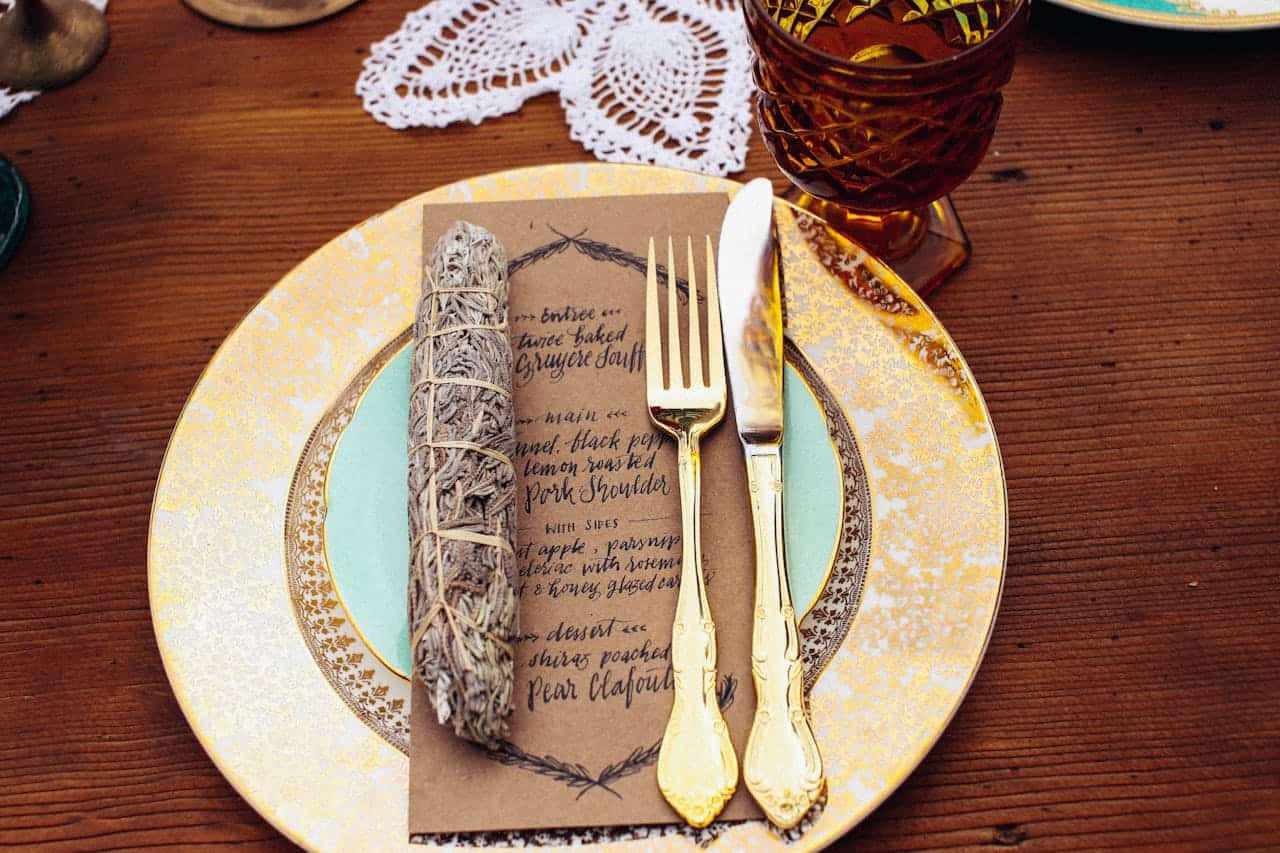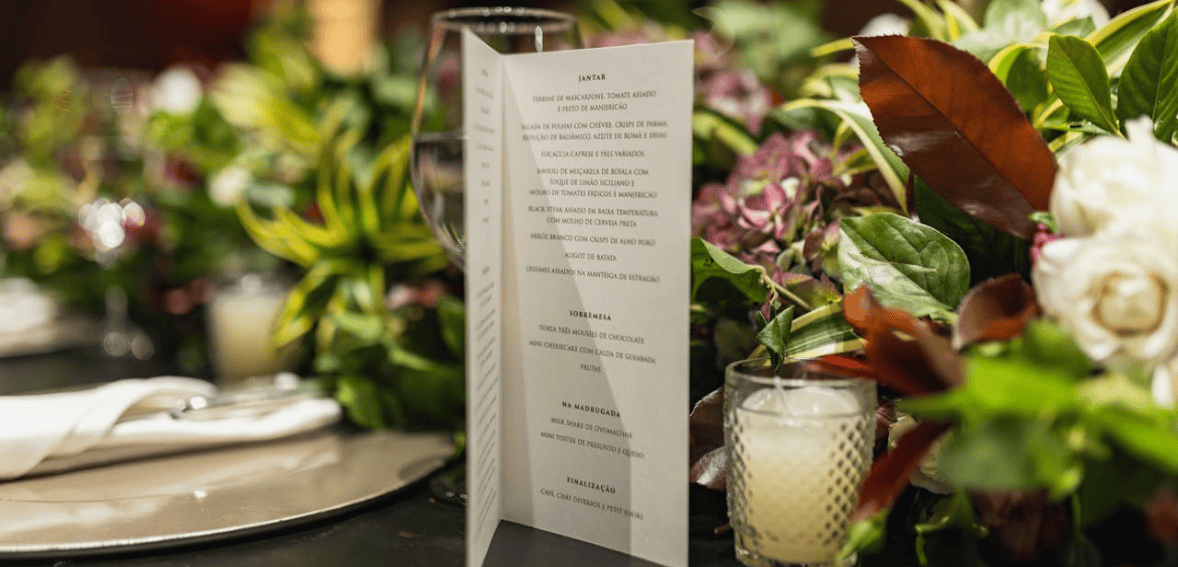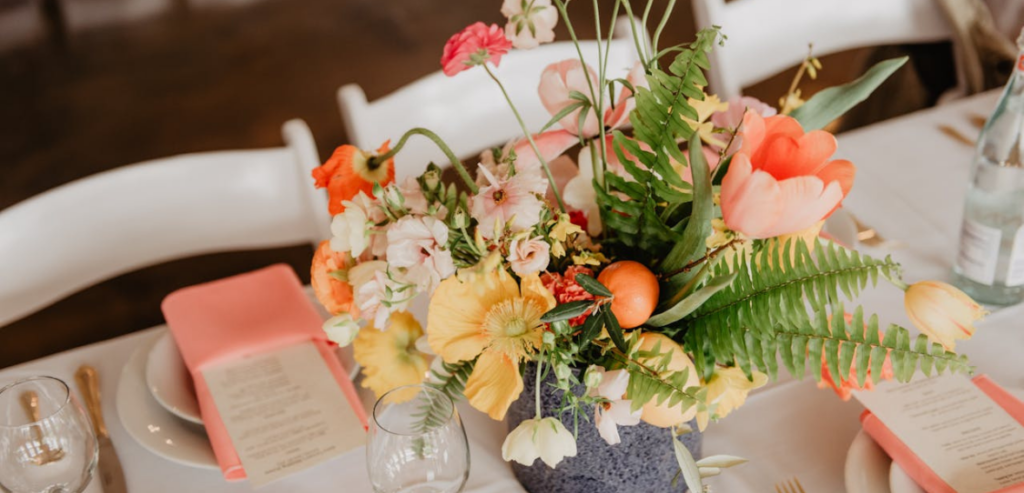
By Jermaine Thomas August 1, 2025
Food is often the heart of any event. Whether it’s a wedding, corporate gathering, birthday, or charity dinner, what’s served on the plate plays a central role in shaping the experience. But in today’s diverse, budget-conscious world, planning an event menu isn’t just about flavor. It’s also about affordability and personal relevance. This is where the idea of a custom event menu becomes not just appealing, but essential.
Guests today come with varied dietary needs and culinary expectations. At the same time, hosts need to be mindful of costs. Balancing both isn’t always easy, but it’s possible with the right planning, flexible vendors, and a willingness to get creative. Whether the goal is impressing a crowd on a shoestring or making sure every guest feels seen and satisfied, menu customization can work in everyone’s favor.
Understanding the Need for Menu Customization
First you need to understand why menu customization matters so much today. Food isn’t just sustenance anymore. It’s a social indicator, a health necessity and a personal choice all in one. Some guests may require gluten free options, others follow a vegan lifestyle or avoid certain ingredients due to allergies or religious reasons. Catering to these needs shows thoughtfulness and hospitality.
And the host has a budget to work with. So we need to be inclusive without breaking the bank. A custom event menu allows us to substitute ingredients, offer alternatives and design portion sizes to make the most of what we have. Menu Customization also allows us to add cultural elements to the menu, making the event even more personal. Whether it’s grandma’s famous curry or a regional dessert, these add-ons create memorable moments for the guests.
Mapping Out Guest Preferences and Dietary Needs
To build a menu that works for everyone, organizers need to gather information up front. This might mean including a dietary preferences section in RSVPs or conducting a short guest survey. Knowing in advance how many guests are vegetarian, kosher, or dairy-free can shape how the meal is structured and which dishes become focal points.
When it comes to guest preference catering, communication with the caterer is crucial. The more details they have about the audience, the better they can propose creative alternatives or substitutions. For example, rather than creating entirely separate dishes for different dietary needs, they may be able to create modular options where one core dish can be served in several ways.
Even preferences that seem minor, like preferring lighter meals during a daytime event or heartier dishes at night, can impact satisfaction levels. Aligning the menu with not just the dietary needs but also the time of day, season, and style of the event improves the overall experience for guests.

Many people think customization always means more money. But in many cases it can actually help control costs. By working with caterers to create affordable options, planners can eliminate waste, streamline prep and stick to a focused ingredient list. For example, family-style service is often less per person than plated service especially when menu customization allows for overlapping components. Choosing seasonal produce, minimizing premium cuts of meat and focusing on local ingredients can also bring down the cost.
Caterers may also offer tiered packages with levels of customization. These can allow planners to choose budget-friendly base menus with one or two premium add-ons. The goal is to prioritize flavor and variety over extravagance. A well-seasoned lentil dish can be just as crowd-pleasing as filet mignon if done right. When budget and preference are considered together the outcome isn’t a compromise. It’s creativity. That’s what makes a custom event menu not just possible but powerful.
Balancing Meat, Vegetarian, and Vegan Choices
Protein is often the most expensive element of any menu, but it’s also where dietary variation is most visible. Some guests may expect meat, while others need plant-based choices. Finding a balanced approach to this part of the meal is key to both cost management and inclusivity. Offering a strong vegetarian or vegan entrée alongside a meat option can lower overall food costs and satisfy a broader group of guests. It’s not uncommon now to see menus where the plant-based item is actually the hero dish, with the meat option serving more as a supplementary choice.
For buffet setups, labels and clear separation between dishes help guests make confident choices. In plated service, allowing guests to pre-select from two or three well-designed entrees ensures that everyone gets what they want, and the caterer can prepare exact quantities. With thoughtful planning, guest preference catering doesn’t need to involve duplicating the entire menu. A few well-executed alternatives can be more effective than a sprawling list of uninspired dishes.
Adapting Menu Formats to Event Style
The type of event will naturally influence the menu structure. A sit-down wedding dinner calls for a different approach than a corporate cocktail hour. A custom event menu should reflect not only food preferences but also the format and flow of the event. For standing receptions or networking events, finger foods and small plates work better. These can be customized easily for dietary needs and are often more budget-friendly. Meanwhile, formal meals benefit from tiered menus with appetizer, entrée, and dessert choices.
Brunch events might call for lighter fare, smoothies, or breakfast bowls. Evening galas may lean toward richer entrees and wine pairings. Regardless of the format, what matters is matching food to function. That means thinking about how guests will eat, how long they’ll stay, and whether food should fuel social interaction or offer a formal culinary experience. Customization in this sense isn’t just about ingredients. It’s about context. The better the menu fits the event environment, the more enjoyable and seamless the experience becomes.
Managing Allergies and Cross-Contamination
When customization includes accommodating food allergies, attention to detail becomes essential. Peanut, dairy, egg, and shellfish allergies can have serious consequences, so clear labeling and careful preparation are vital.
Discussing these needs with the catering team ahead of time ensures they have the protocols in place to handle such requests safely. In some cases, this may mean separate preparation areas or serving utensils. If your guest list includes several people with severe allergies, it’s helpful to designate a contact person who can communicate directly with the caterer on their behalf.
An easy way to show care is to include allergen indicators on printed menus or buffet tags. A small note like “contains nuts” or “gluten-free” can go a long way in reducing anxiety for guests and helping them enjoy the event without worry. Making space for safety within your custom event menu shows that you’re not just trying to impress with flavors, you’re genuinely thinking about everyone’s wellbeing.
The Role of Portion Control in Menu Planning
Another area where cost and preference intersect is portion control. Oversized portions can lead to food waste and higher costs. Undersized portions, on the other hand, can leave guests unsatisfied. Striking the right balance starts with understanding the expected flow of the event. If multiple courses are being served, lighter portions are appropriate. For buffet setups, variety matters more than volume per item. For passed appetizers or small plates, having a higher item count but smaller bites can help stretch the budget while still offering diversity.
Customizing portion sizes allows for more strategic ingredient use. For example, offering two medium-sized protein options instead of one large cut allows guests to mix and match. Dessert tables with mini versions of multiple sweets often delight guests more than one large slice of cake. A successful custom event menu doesn’t overwhelm. It satisfies. Portion control plays a silent but powerful role in making that happen without straining your budget.
Elevating the Experience with Personalized Touches
Even when working with affordable catering options, there’s room for creativity that doesn’t break the bank. Small touches like signature mocktails, personalized name cards, or dishes named after the couple or event theme can add charm. Customizations don’t always have to be extensive. Even offering one curated option that reflects the guest of honor’s favorite dish or childhood memory can make a big impression. Similarly, featuring local ingredients or traditional recipes tied to the host’s background can bring depth and authenticity to the experience.
Dessert bars, build-your-own salad or taco stations, and regional tasting tables are all examples of how customization can also be interactive. These ideas engage guests, accommodate varied preferences, and turn food into entertainment. In this way, guest preference catering becomes part of the storytelling. It shows care and consideration while leaving lasting memories.

Collaborating Effectively with Caterers and Vendors
Catering teams are your biggest allies in creating a successful menu. But to make the most of the relationship, communication is key. Start by clearly outlining your goals, budget, dietary concerns, and desired guest experience. Ask for suggestions rather than presenting a rigid list. Often, caterers have creative ideas that can meet your needs in more cost-effective ways.
If you’re working with a venue that has in-house catering, understand their flexibility. Can you bring in outside dishes or request substitutions? What are the additional costs, if any? When working with outside vendors, get everything in writing. Be specific about what’s included, how many servers are provided, and how menu changes will be handled. Confirm how allergies and special requests are documented and managed. A strong collaboration makes your custom event menu more achievable. It transforms catering from a transactional service into a creative partnership.
Evaluating Menu Success Post-Event
Once the event is over, it’s helpful to reflect on how well the menu performed. Did guests seem satisfied? Were dietary needs accommodated? Was food left over, or did you run short? Collecting this feedback helps in planning future events. If certain dishes were particularly popular, they can become signature items for your next gathering. If a certain portion size didn’t work, adjustments can be made. Ask your caterer for insights too, they often notice patterns during service that can inform future decisions.
Taking a moment to evaluate the success of your custom event menu turns one great meal into a stepping stone for many more. It strengthens your understanding of what your audience appreciates and how to balance creativity with cost.
When planning a custom event menu, beverages often play a supporting yet important role. A well-chosen drink package can complement the food offerings, elevate the guest experience, and help manage overall costs. Just like food, drink preferences vary widely, some guests prefer wine or cocktails, while others may want non-alcoholic options or infused waters.
Working with your vendor to offer flexible packages allows you to match the drink list to both your audience and your budget. For example, a daytime event might focus more on light refreshments like mocktails, teas, or sparkling waters, while an evening gathering may include a curated wine or beer selection.
Drink stations can be another form of customization. A DIY lemonade or iced tea bar with a few simple mix-ins can serve large groups efficiently while still feeling personal. For more formal events, signature cocktails that reflect the host’s taste or the theme of the event can add a special touch without requiring a full open bar.
Just like with food, the goal is to keep things intentional. Matching drinks to the menu and preferences of your guests enhances the meal experience while ensuring your affordable catering options stay balanced and cohesive.
Using Menu Cards to Communicate with Guests
One of the often overlooked but valuable parts of a custom event menu is how the food is communicated to your guests. Printed menu cards or signage helps to manage expectations, reduce confusion and make guests with dietary restrictions feel comfortable. It also adds to the presentation and professionalism of the dining experience.
For plated meals, menu cards at each table setting gives guests a clear idea of what to expect and allows them to choose. For buffets or food stations, signage next to each dish can list ingredients, allergens and dietary tags like “vegan”, “gluten-free” or “contains nuts”. This is especially helpful for guest preference catering where the audience may have diverse needs.
These don’t have to be fancy or expensive. Simple tent cards with legible fonts will do the job. What matters is that they are accurate, visible and aligned with the tone of the event.
In addition to functionality, well-designed menus can also add to the decor and theme. They serve a dual role, informing guests and enhancing the ambiance. With just a little effort, this small detail can have a big impact on guest comfort and overall dining satisfaction.
Conclusion
Creating a menu that balances cost and guest preferences is both achievable and essential. With careful planning, open communication, and creativity, event hosts can design flexible, inclusive menus that suit dietary needs and budgets. Thoughtful catering makes guests feel valued and turns food into a memorable, meaningful part of the event.